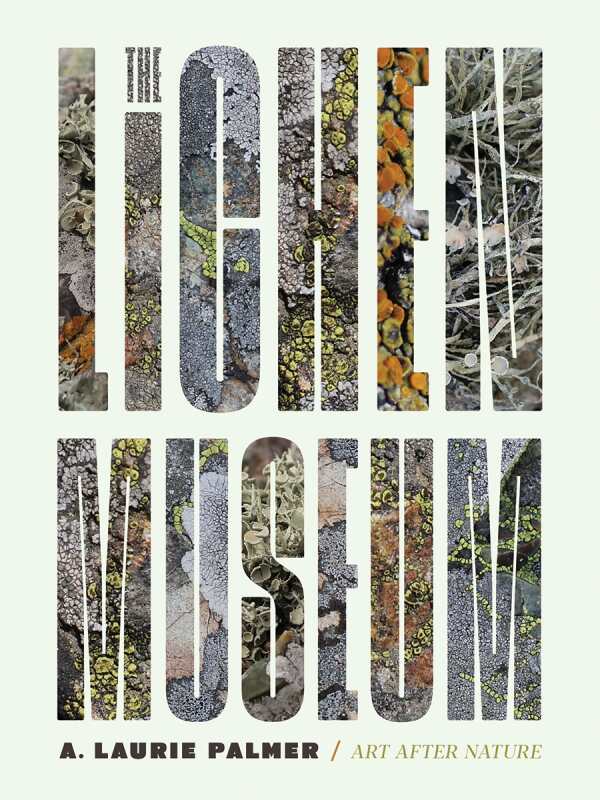The Lichen Museum
Art after Nature
Art professor A. Laurie Palmer’s musing interdisciplinary work The Lichen Museum draws life lessons from often-overlooked organisms.
Lichens, Palmer notes, have served as food, drink, dye, and decoration for millennia, though their diminutive size and gradual growth discourages industrial-scale harvesting. After artful scrutiny and discussions with lichenologists, Palmer names five key lichen characteristics worth emulating: plurality (a lichen is a partnership between a fungus and an alga or cryptobacterium, and therefore models symbiosis) slowness (a lichen’s lifespan is hundreds or thousands of years), site fidelity (for lichen, often to extreme locations uninhabited by other species); close association with (non-living, yet dynamic) rock; and resistance to exploitation.
Grand expeditions are not a necessity: although Palmer traveled to the Burren in County Clare, Ireland, an abandoned silver mine in Greece, and the High Arctic to see various species of lichen, she also communed with lichens at home in California. Only up close, after all, can they be appreciated, she says. Time slows and patience is a must. She elucidates this through poem-like anaphora (“Attending to lichens” is a repeated phrase in the introduction) and the language of participatory engagement: observation puts one “in close relation with the actual surfaces of the world” but can also appear “suspicious.” Indeed, her hands-and-knees surveillance of lichens once earned her a warning from mall security.
The Lichen Museum itself is a virtual space, though Palmer also contributed a companion installation to the Chicago exhibition Imperceptibly and Slowly Opening. Here, nineteen color plates picture lichens in situ. Their names alone are a charming litany: cryptic kidney, gnome fingers, lipstick powderhorn, and mountain sausage. The focus on the humble and ordinary (rediscovered as extraordinary) is refreshing.
Meditative and inquisitive, The Lichen Museum is an interdisciplinary work about learning from the most unassuming of species.
Reviewed by
Rebecca Foster
Disclosure: This article is not an endorsement, but a review. The publisher of this book provided free copies of the book to have their book reviewed by a professional reviewer. No fee was paid by the publisher for this review. Foreword Reviews only recommends books that we love. Foreword Magazine, Inc. is disclosing this in accordance with the Federal Trade Commission’s 16 CFR, Part 255.

